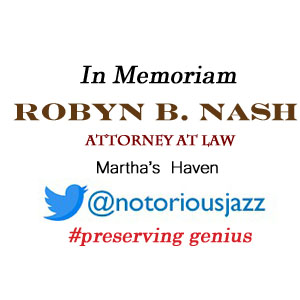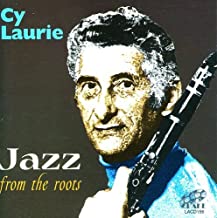
Daily Dose Of Jaz…
Cyril Laurie was born on April 20, 1926 in London, England of Latvian/Jewish immigrant stock. A self-taught clarinetist he put together a band in 1947. George Melly debuted in this ensemble in 1948. He played with Mike Daniels in 1949-50 and led the Cy Laurie Four in 1950 with Fred Hunt and Les Jowett.
He ran his own club in Windmill Street, Soho, London from 1951 and headed a seven-member ensemble with Chris Barber, Alan Elsdon, Al Fairweather, Graham Stewart and Colin Smith. Cy Laurie’s Club was in a basement in Ham Yard in Great Windmill Street, opposite the Windmill Theatre.
Quitting music from 1960 to 1968, he travelled to India to study meditation with the Maharishi Mahesh Yogi. Returning in 1968 to lead another ensemble at the end of the decade his career saw a resurgence late in the 1970s. He toured in ensembles as a soloist and sometimes led his own groups. Cy played with Eggy Ley and Max Collie in the 1980s. He continued performing into the 1990s. In 1996 to celebrate his 70th birthday he put together a celebratory reunion gig at London’s 100 Club.
Clarinetist Cy Laurie, who was a leading figure in the post 1945 Trad Jazz boom in the UK, passed away on April 18, 2002 at the age of 75 in Stapleford Abbotts, Essex, England.
More Posts: bandleader,clarinet,history,instrumental,jazz,music
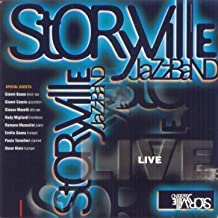
Daily Dose Of Jazz…
Glauco Masetti was born on April 19, 1922 in Milan, Italy and was classically trained on violin, attending the Milan and Turin conservatories. An autodidact on reed instruments, in the late 1940s he worked with Gil Cuppini for the first time, an association that would continue into the 1960s.
Masetti often worked as a session musician in the first half of the 1950s with Gianni Basso and Oscar Valdambrini among others. He led his own ensemble from 1955, and played with Eraldo Volonté and Chet Baker. In addition to working with Cuppini again for most of the 1960s, he also played with Giorgio Gaslini during that decade.
Reedist Glauco Masetti passed away on May 27, 2001 in Milan.
More Posts: bandleader,history,instrumental,jazz,music,reeds

Requisites
Louis Smith steps into the spotlight for this morning’s discussion with his second 1958 record for Blue Note following Here Comes Louis Smith. Born in Memphis, Tennessee, he began playing the trumpet as a teenager and his first recording was Swingin’ by Kenny Burrell, a 1980 Japanese album combining three sessions in 1956, 1958, and 1959. Smith took a job as a music director of Booker T. Washington High School in Atlanta, Georgia rather than becoming a full-time musician. After leaving school, he became the Director of the Jazz Ensemble at the University of Michigan and a teacher in Ann Arbor. Louis was also an excellent composer. On Smithville (Blue Note BLP 1594), he’s working with an elite quartet, Charlie Rouse on tenor sax, Sonny Clark on piano, Paul Chambers on bass, and Art Taylor on drums. The LP used in this report is a friend’s copy of the 2010 Music Matters Jazz 45-rpm Mono reissue (MMBLP-1594).
Record One starts with us arriving at Smithville, a slow-tempo blues by Louis inhabiting the first side. Everyone takes it easy from the introduction by Paul and Louis into a laid-back ensemble opening chorus. Charlie opens with a casualness and relaxed attitude on the lead solo. Louis takes over for a mellow, very personal presentation, then Sonny wraps up the song with a delightful showcase that’s handsomely constructed. Wetu, also by Smith occupies Side Two, commencing with the tempo way up and the quintet playing like the wind on the melody. Rouse takes off first with exhilarating speed. Smith also travels fast on the next interpretation. Taylor sets up a ferocious beat for Clark’s fingers to fly fiercely over the keys in an incandescent performance, and Chambers is especially productive on the final spot ahead of the ending theme.
Record Two begins with Embraceable You by George and Ira Gershwin. Louis is the main horn here and approaches the melody and opening statement with a softer voice, summoning affectionate warmth from his trumpet. Sonny shows his sentimental side on a hauntingly beautiful interpretation before Louis and Charlie connect on a pleasantly sweet reprise and climax. There Will Never Be Another You by Harry Warren and Mack Gordon was first heard in the 1942 film, Iceland. It opens with a brief introduction by Clark preceding an invigorating theme. Rouse opens the lead solo swinging immensely, then takes the next chorus one octave higher. Smith unwinds a lively series of scintillating choruses. Clark responds to both horns with enthusiastic virtuosity. Chambers steps into the spotlight last with strong, bass lines soaring back to the soft conclusion.
The finale is Later, a quick original by the leader flying at a speedy clip. Louis meets the challenge with a skyrocketing first solo. Charlie comes next with an adrenaline-charged reading. Sonny follows with a high-voltage power supply. Art brings the song home with some dynamic drumming into the quintet’s cooking reprise and sudden stop ending. If you’ve read any of the other MMJ reissues I’ve discussed, you already know the quality and care that goes into each title is well-known among audiophiles and jazz lovers. For those who haven’t heard them before, they’re mastered from the original analog tapes and pressed on 180-gram audiophile vinyl at RTI (Record Technology Incorporated) in Camarillo, California. Inside the gatefold are extremely beautiful photos from the session by Francis Woolf that could be proudly displayed on your listening room wall.
After listening to both records, I pulled out my 1991 Toshiba-EMI Limited Japanese 33 1/3 Mono reissue to compare the sound with the MMJ LP. The Toshiba reissue has an exceptional soundstage throughout the highs, midrange, and low end. The instruments come to life through your speakers as if you’re at Mr. Van Gelder’s home alongside the musicians during the recording. However, the sound quality of the MMJ Mono reissue is significantly elevated with superb mastering that’s very detailed making an already great-sounding album, that much better. I listened intently to both reissues becoming completely engrossed in the music and while my system isn’t high-end, it still made an enduring impression, and I could hear the difference.
It would be another thirty-seven years before Louis Smith returned to the studio to record an album as a leader. In 2006, Louis suffered a stroke ending his professional career, but he continued to enjoy live jazz in the Detroit-Ann Arbor area until his passing on August 20, 2016, at age eighty-five. To me, Smithville is a shining example of first-rate, no-frills Hard-Bop capturing the driving energy of the musicians at their best. On your next search for vinyl treasure, I invite you to take a trip to Smithville. There you will find an outstanding session of amazing music by Louis Smith that’s highly recommended for your library!
~Here Comes Louis Smith (Blue Note BLP 1584), Smithville (Blue Note BLP 1594-BN 1594), Swingin’ (Blue Note GXF 3070) – Source: Discogs.com ~Embraceable You, There Will Never Be Another You – Source: JazzStandards.com ~Booker Little, Louis Smith – Source: Wikipedia.org © 2021 by Edward Thomas Carter
More Posts: choice,classic,collectible,collector,history,instrumental,jazz,music
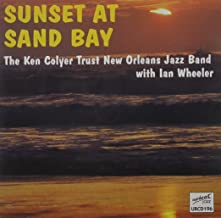
Daily Dose Of Jazz…
Kenneth Colyer was born on April 18, 1928 in Great Yarmouth, Norfolk, England, but grew up in Soho, London, and served as a member of his church choir. Listening to his elder brother’s jazz records which influenced him. He joined the Merchant Navy at 17, travelled around the world and heard famous jazz musicians in New Orleans, Louisiana.
In the UK, Colyer played with various bands and joined the Crane River Jazz Band in 1949 with Ben Marshall, Sonny Morris, Pat Hawes, John R. T. Davies, Julian Davies, Ron Bowden and Monty Sunshine. Rejoining the Merchant Navy, and jumping ship in Mobile, Alabama, he travelled to New Orleans, where he played with his idols in George Lewis’ band. Though offered the job of lead trumpeter on a tour, he was caught by the authorities, detained and deported.
Ken went on to join the Chris Barber Band and made their first recordings on the Storyville in 1953. Parting company the following year, then briefly joined a band in the mid-1950s with clarinetist Acker Bilk and trombonist Ed O’Donnell.
Then he put together his own band with Mac Duncan, Ian Wheeler, Johnny Bastable, Ron Ward, Colin Bowden and Ray Foxley. This band played together until the early 1960s before incorporating a new lineup.
After a bout with stomach cancer in 1972 he stopped being a bandleader but continued to work, occasionally associated with Chris Blount’s New Orleans Jazz Band. A biography, Goin’ Home, was compiled by Mike Pointon and Ray Smith. Trumpeter and cornetist Ken Colyer, who was known for skiffle interludes and devoted to New Orleans jazz, passed away on March 8, 1988.
More Posts: bandleader,cornet,history,instrumental,jazz,music,trumpet
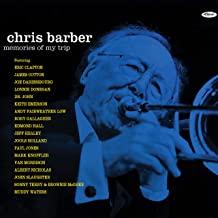
Daily Dose Of Jazz…
Chris Barber was born Donald Christopher Barber in Welwyn Garden City, Hertfordshire, England on April 17, 1930. He started learning the violin when he was seven years old, got his education at Hanley Castle Grammar School, Malvern, Worcestershire, to the age of 15, where he started to develop an interest in jazz. After the end of World War II, he attended St Paul’s School in London, and began visiting clubs to hear jazz groups. He then spent three years at the Guildhall School of Music, and started playing music with friends.
The 1950s saw Barber forming the New Orleans Jazz Band, with him on double bass, playing both trad jazz and blues tunes. By 1952 he became a professional musician. With clarinetist Monty Sunshine they formed a band in later that year, and began playing in London clubs, accepting an offer to play in Denmark in early 1953, making its debut in Copenhagen. The bands played Dixieland jazz, and later ragtime, swing, blues and R&B and the band became The Chris Barber Band.
In the late 1950s and early 1960s, Barber was mainly responsible for arranging the first UK tours of blues artists which would spark the British invasion of the U.S. charts in the 1960s. Stunning traditionalists in 1964, he introduced blues guitarist John Slaughter into the line up. This eleven-man “Big Chris Barber Band” offered a broader range of music including Duke Ellington, while reserving a spot in the programme for the traditional six-man New Orleans line-up.
He published his autobiography Jazz Me Blues in 2014, with co-author Alyn Shipton. He retired in 2019 after some 70 years of performing, with an OBE to his credit for services to music, an honorary doctorate from Durham University, and awarded the Blues Louis for his services to popularizing the blues in Europe, and the German Jazz Trophy.
Trombonist Chris Barber, who suffered from dementia in the period before his death, passed away on March 2, 2021 at 90.
More Posts: bandleader,history,instrumental,jazz,music,trombone


